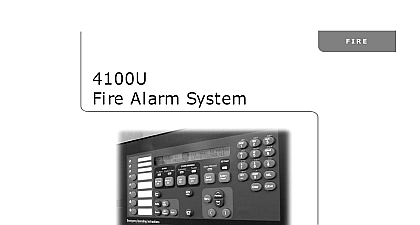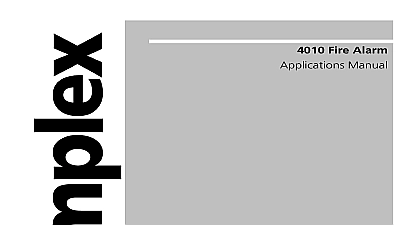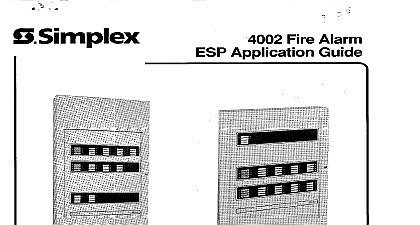Simplex Fire Alarm Strobe Application Guide

File Preview
Click below to download for free
Click below to download for free
File Data
| Name | simplex-fire-alarm-strobe-application-guide-4692013857.pdf |
|---|---|
| Type | |
| Size | 977.59 KB |
| Downloads |
Text Preview
A Reference for Satisfying the Visible Notification Requirements of ADA and Locating Simplex Visible Notification Appliances guide is intended as an informational resource and is not intended to provide definitive legal engineering design or advice Legal engineering design or architectural requirements and interpretations may vary from to jurisdiction or project to project Therefore no warranty or representation is made about the sufficiency of of the contents of this guide Simplex disclaims any and all liability for damages of any sort claimed to result from the of this guide This guide is distributed with no warranties whatsoever including but not limited to warranties of or fitness for a particular purpose Readers with specific questions should consult the appropriate advisor smoke or fire is detected the fire alarm system activates to alert occupants to evacuate the areas Fire alarm notification appliances provide warning signals on command from the alarm system control panel Combinations of audible and visible notification appliances are because they involve two sensory inputs sound and sight a person is deaf or hearing impaired the flashing visible signal from a fire alarm notification provides the warning For the vision impaired an audible signal provides the alarm For people who perceive both sight and sound the visible appliance reinforces the signal and avoids confusion with any other non alarm sounds that may be normally heard in local area Note Hearing impaired refers to any individual who would not be properly notified by appliances whether due to high ambient noise the wearing of hearing protection or hearing ability is temporarily or permanently diminished proper fire alarm visible notification requires determining the quantity intensity and of the appliances for each area This guide is intended to summarize the proper application Simplex visible notification appliances consistent with the rules of the appropriate regulatory The term strobe is commonly used to describe visible notification appliances using xenon designs We have used strobe in that meaning throughout this guide yes then you must determine whether a fire alarm system is required and or specified is determined by state laws and local ordinances that typically refer to regional or national building and safety codes In general the need for fire alarm systems and audible and visible notification is applicable to structures whether private or public Always consult with your local Authority Having Jurisdiction AHJ to the exact requirements for your application building codes and their responsible organizations are NFPA 101 Life Safety Code by the National Fire Association the National Building Code by Building Officials and Code Administrators Inc BOCA the Standard Building Code by the Southern Building Code Congress International and the Uniform Building Code by the International Conference of Building Officials ICBO yes then special considerations may be required Locations where the occurrence of flashing strobes may panic or other hardship among medical patients are allowed to provide an equivalent notification means places the notification and relocation burden upon the health care staff who are trained to properly In these areas appliances providing private mode notification may be required to the ADAAG Section 4.28 a minimum visual signal appliances shall be provided in and facilities in each of the following areas rest rooms and any other general usage areas e g rooms hallways lobbies and any other area for common use Using this logic other typical areas include Classrooms Restaurants Gymnasiums Cafeterias Photocopy Rooms and Employee Break 4 describes public areas Examples of controlled access or areas would be Mechanical Electrical Closets Rooms Telephone Closets Rooms or other Similar Unoccupied Utility There are four general categories of occupancy that must be considered Public Mode Private Mode and Non Sleeping The type of occupancy characterizes the potential occupant and in turn defines the notification requirements areas are those that would be expected to have members of the general public in attendance These would be considered to be a cross section of society and could be visitors to the area without any knowledge of the area and its established fire response procedures areas would be inhabited only by persons directly concerned with the implementation and direction of action both initiation and procedure in the area protected by the fire alarm system areas especially when occupied by the deaf or hearing impaired require special consideration must be properly located within the room and must be installed at the proper height on the wall areas are where people would not be expected or allowed to be sleeping Regardless of their ability less visible notification is required when people are awake


